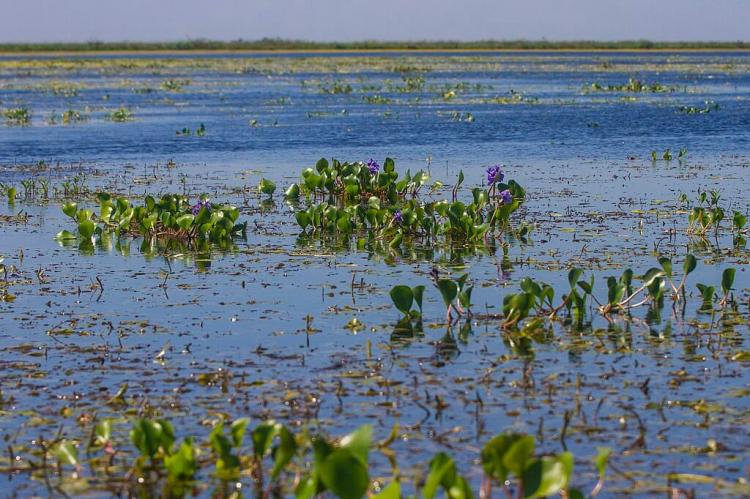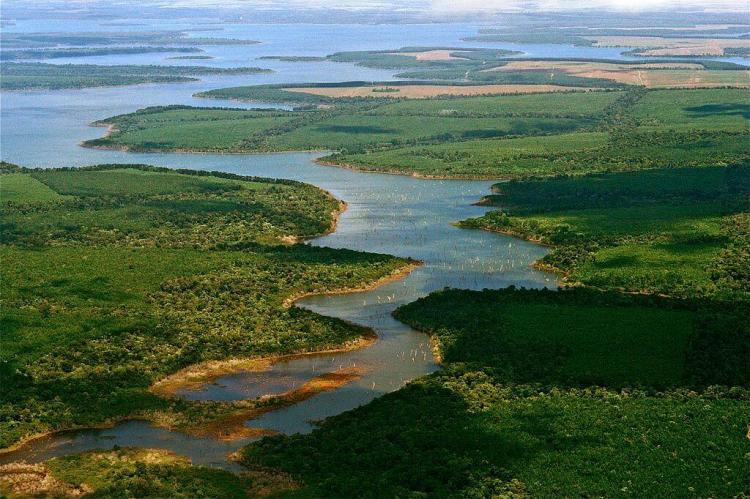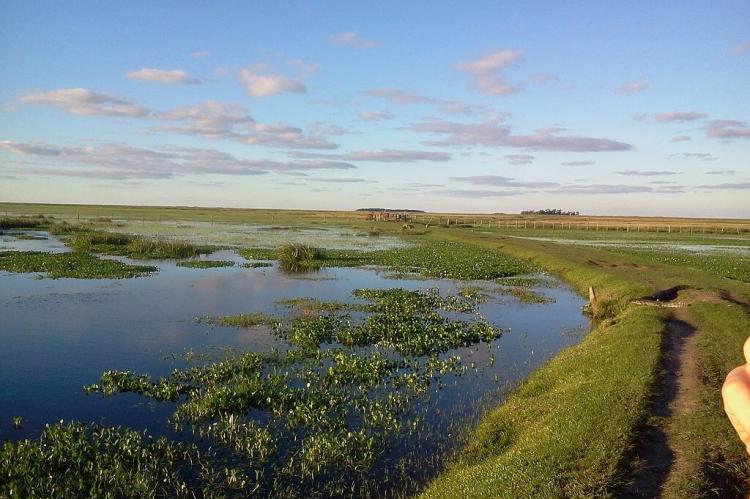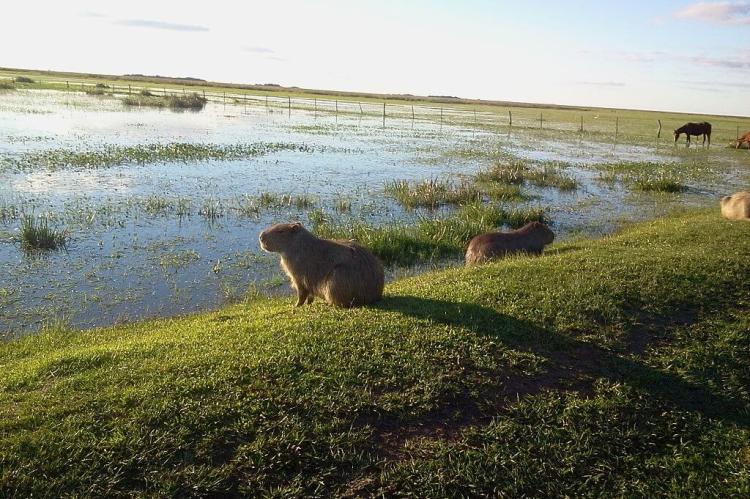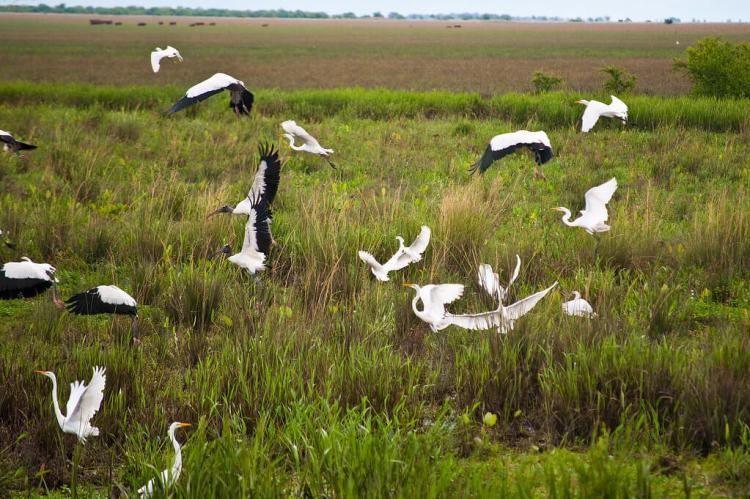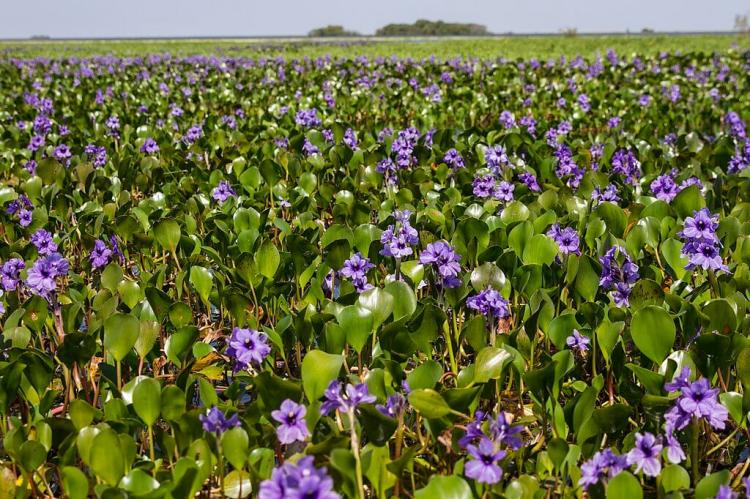The Iberá Wetlands: Argentina's Natural Wonderland
Located in the northwestern province of Corrientes, Argentina, is the stunning ecosystem called the Iberá Wetlands or Esteros del Iberá. This extensive wetland consists of a patchwork of marshes, swamps, bogs, lakes, and lagoons, making it one of the largest freshwater reserves in South America.
The Iberá Wetlands: Argentina's Natural Wonderland
Nestled in the province of Corrientes in northwestern Argentina lies the breathtaking ecosystem known as the Iberá Wetlands, or Esteros del Iberá. This expansive wetland marvel unfolds as a mosaic of marshes, swamps, bogs, lakes, and lagoons, creating one of the most significant freshwater reservoirs on the South American continent.
The Iberá Wetlands, seamlessly integrated into the Humid Chaco ecoregion, serve as an ecological haven, boasting an expanse of 13,000 - 15,000 square kilometers (5,800 - 6,000 square miles). Beyond its sheer size, this intricate network of water bodies plays a pivotal role in sustaining the region's water supply and acting as a crucial force in flood control.
Ecosystem Dynamics
The Iberá Wetlands form a mesmerizing landscape where water and land interweave to create a dynamic and ever-changing environment. Marshes stretch like a quilt, swamps paint a picturesque scene, bogs breathe life into the soil, lakes mirror the sky, and lagoons ripple with the dance of aquatic life. This intricate tapestry of wetlands, framed by the Humid Chaco ecoregion, showcases the delicate balance between marine and terrestrial ecosystems, offering a sanctuary for a rich diversity of life.
Biodiversity
At the heart of the Iberá Wetlands lies a treasure trove of biodiversity that has earned it the title of Argentina's natural wonderland. The wetlands harbor an extraordinary array of flora and fauna, making them a haven for nature enthusiasts and researchers. They host over 4,000 plant and animal species, many endemic and some endangered.
The wetlands are a haven for birdlife, with over 350 species of birds, including vibrant flamingos, herons, and the iconic South American screamers. The wetlands serve as a crucial breeding ground and migratory stop for numerous bird species, adding melody to the ecosystem.
The water bodies teem with diverse aquatic life, from the endangered maned wolf swimming through the shallows to caimans lurking beneath the surface. Fish species like dorado and surubí thrive, sustaining the delicate balance of the wetland's food web.
The flora of the Iberá Wetlands is equally captivating. It features aquatic plants, floating meadows, and lush vegetation along the shores. The wetlands showcase species' resilience adapted to wet and dry conditions, creating a botanical spectacle unique to this region.
Water Source and Flood Control
Beyond their role as a haven for biodiversity, the Iberá Wetlands function as a vital water source for the region. The interconnected water bodies act as natural reservoirs, storing water during the rainy season and gradually releasing it during drier periods. This natural regulation helps prevent flooding in downstream areas, demonstrating the wetlands' integral role in flood control.
Protected Areas
Recognizing the ecological significance of the Iberá Wetlands, Argentina has undertaken efforts to protect and preserve this natural wonder. The wetlands boast several protected areas and reserves, ensuring the conservation of its unique ecosystems. Notable among these is the Iberá Provincial Reserve, which was established to safeguard the wetland's biodiversity.
The creation of the Iberá National Park further underscores Argentina's commitment to conservation. The park serves as a sanctuary for wildlife, allowing visitors to witness the wonders of the wetlands while fostering research and education initiatives.
The protected areas within the Iberá Wetlands in northwestern Argentina can be classified into the following hierarchy:
- Iberá National Park (Parque Nacional Iberá):
- Iberá National Park is the highest level of protection within the Iberá Wetlands.
- It covers an area of approximately 1,300 sq km (500 sq mi).
- The park aims to preserve the wetlands' ecosystems, including their flora, fauna, and cultural heritage.
- It offers opportunities for nature-based tourism and outdoor activities opportunities while promoting sustainable practices.
- Iberá Natural Reserve (Reserva Natural Iberá):
- The Iberá Natural Reserve is the original core protected area within the Iberá Wetlands.
- It covers an area of approximately 1,340 sq km (517 sq mi).
- The Conservation Land Trust (CLT) manages the reserve in collaboration with local communities. Its goal is to conserve and restore the wetlands' natural ecosystems.
- The reserve serves as a wildlife sanctuary and a research site, with efforts made towards restoring locally extinct species, such as the jaguar and giant anteater.
- Iberá Provincial Reserve (Reserva Provincial Iberá):
- The Iberá Provincial Reserve is a provincial-level protected area within the Iberá Wetlands.
- It covers an extensive area of approximately 1,720 sq km (664 sq mi).
- The Corrientes Province manages the reserve and complements the Iberá Natural Reserve and Iberá National Park conservation efforts.
- Its primary objectives include preserving the wetlands' natural and cultural heritage, promoting sustainable development, and providing opportunities for ecotourism.
Together, these protected areas contribute to the preservation and sustainable management of the Iberá Wetlands' unique ecosystems and wildlife.
Challenges and Conservation
Despite their ecological significance, the Iberá Wetlands face challenges. Human activities, including deforestation and pollution, threaten the delicate balance of this ecosystem. Conservation efforts, led by governmental and non-governmental organizations, focus on sustainable management practices, community engagement, and scientific research to ensure the wetlands' long-term health.
In conclusion, the Iberá Wetlands stand as a testament to the intricate beauty of nature. This watery wonderland, with its vibrant biodiversity, water regulation capabilities, and protected areas, invites admiration and underscores the importance of conservation. As Argentina continues its commitment to preserving this natural gem, the Iberá Wetlands remain a living testament to the harmonious coexistence of land, water, and life.
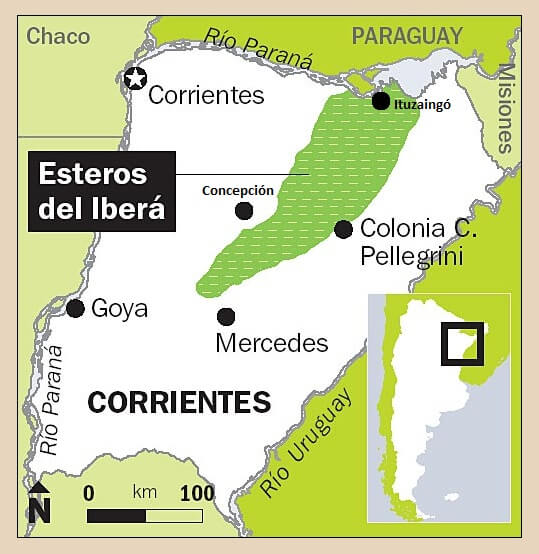
Map depicting the location of Esteros del Iberá, Corrientes, Argentina.
Iberá National Park
Iberá National Park, also known as Parque Nacional Iberá, is a renowned national park in northeastern Argentina's expansive Iberá Wetlands. Established in 2018, the park represents a significant milestone in the region's conservation efforts and contributes to protecting its unique biodiversity and ecosystems.
Spanning an area of approximately 1,300 square kilometers (500 square miles), Iberá National Park encompasses diverse habitats such as marshes, swamps, lagoons, wet meadows, and forests. It is a crucial sanctuary for an extraordinary array of plant and animal species, including many rare and endangered ones.
The National Park is particularly renowned for its wildlife. It provides a refuge for numerous charismatic species, including capybaras (the world's largest rodent), marsh deer, giant river otters, howler monkeys, yacaré caimans, and various bird species. The park's birdlife is especially remarkable, with over 350 species documented, including the colorful roseate spoonbill, the striking black-and-white jabiru stork, and the critically endangered crowned solitary eagle.
Iberá National Park features a network of trails and waterways for hiking, boating, and wildlife observation. Guided tours and interpretive programs provide insights into the park's ecology, conservation efforts, and cultural heritage.
Iberá Natural Reserve
The Iberá Natural Reserve, also known as Reserva Natural Iberá or Iberá Reserve, is the core and original protected area of the Iberá Wetlands. It was established in 1983 and covers an extensive area of approximately 1,340 square kilometers (517 square miles).
The Iberá Natural Reserve is the largest protected area in Argentina. It protects a spectacular offering of streams, marshes, lagoons, and swamps that cover approximately 14% of Corrientes Province. It is home to an incredible variety of wildlife, including turtles, black caimans, capybaras, giant anteaters, giant otters, howler monkeys, maned wolves, jaguars, caimans, various deer species, and over 360 species of birds.
The reserve is managed by The Conservation Land Trust (CLT) in collaboration with local communities. Its primary objective is the conservation and restoration of the wetlands' natural ecosystems. The reserve serves as a wildlife sanctuary and a research site, focusing on restoring locally extinct species, such as the jaguar and giant anteater.
Iberá Provincial Reserve
The Iberá Provincial Reserve, also known as Reserva Provincial Iberá, is a protected area within the Iberá Wetlands in northeastern Argentina. Established by the Corrientes Province in 1983, the reserve covers an extensive area of approximately 1,720 square kilometers (664 square miles).
The primary objective of the reserve is to preserve the natural and cultural heritage of the Iberá Wetlands. It complements the conservation efforts of the neighboring Iberá Natural Reserve and Iberá National Park. The reserve characterizes diverse ecosystems, including marshes, lagoons, swamps, and forests. It is a vital habitat for many plant and animal species, contributing to the region's exceptional biodiversity.
Within the Iberá Provincial Reserve, visitors can experience the beauty of the wetlands through various activities. Exploring the reserve's trails, visitors can observe and appreciate the rich wildlife, which includes capybaras, marsh deer, yacaré caimans, and numerous bird species.
The reserve is committed to promoting sustainable development and responsible tourism practices. It provides ecotourism opportunities, allowing visitors to appreciate the natural wonders of the wetlands while supporting the local economy and community initiatives.
In addition to its ecological significance, the Iberá Provincial Reserve also holds cultural value. It is home to local communities with long-standing connections to the land, and efforts are made to preserve and celebrate their cultural heritage.
